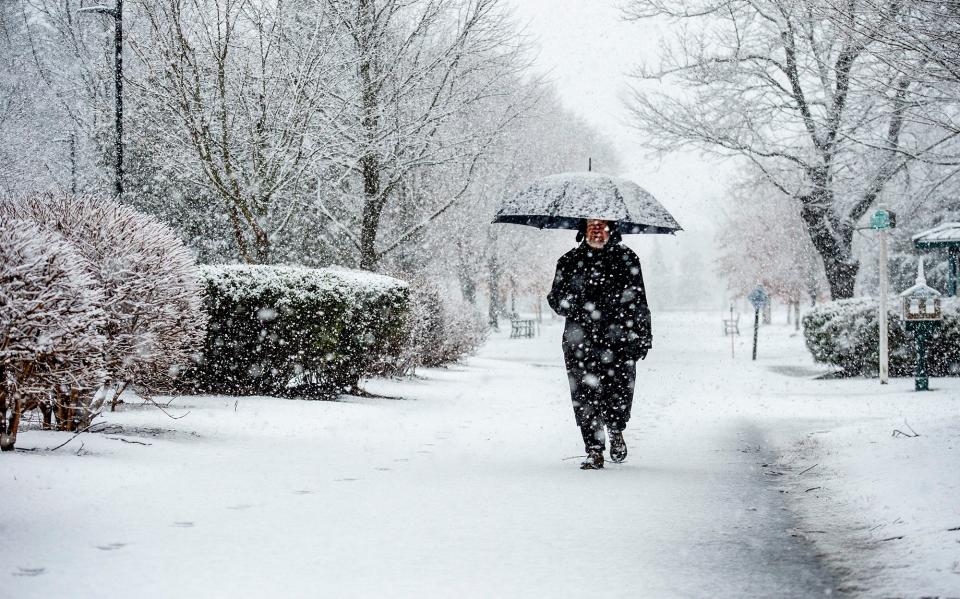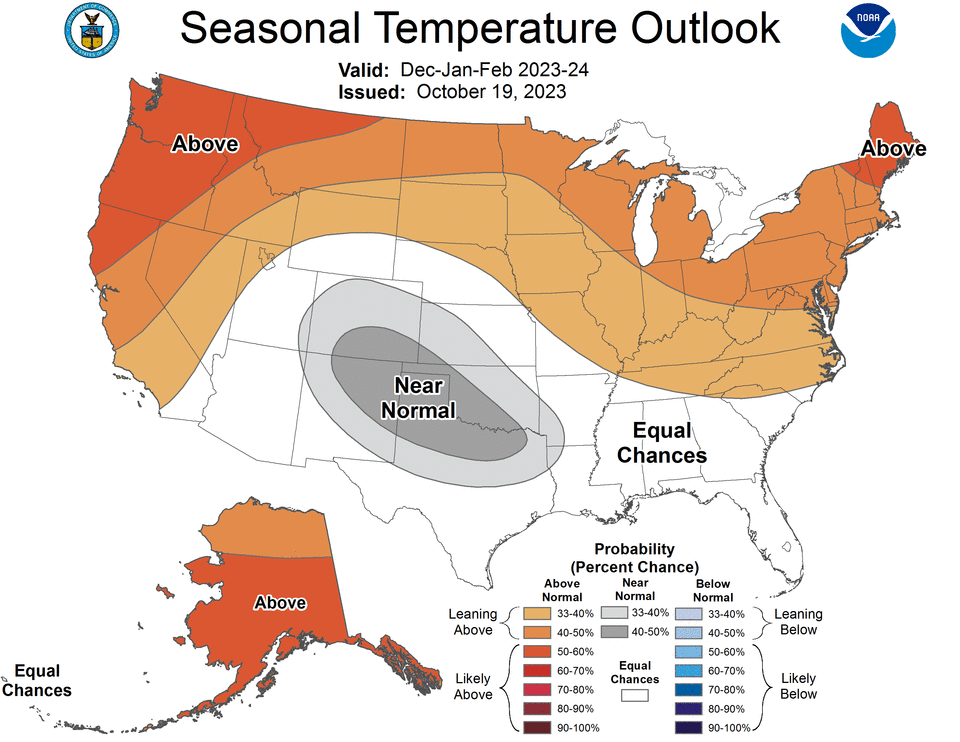Winter weather forecasts: How much snow is expected in the MetroWest area?
Wednesday night's forecast called for a "light wintry mix north and west overnight" of Boston, according to WCVB-TV meteorologist Cindy Fitzgibbon.
So you know. It's getting close.
Last year's winter was decidedly mild in MetroWest, but what are meteorologists and climate experts forecasting for this year?
Recent guidance has been published, perhaps offering a hint about what to expect as temperatures get colder and days grow shorter.
Weather forecasters: who are the reputable experts?
The National Oceanic and Atmospheric Administration, which predicts temperatures and precipitation rates relative to seasonal norms, has published its 2023-24 Winter Outlook for the United States. According to its report, Massachusetts residents can expect above average temperatures this winter, with marginally above average precipitation rates.

NOAA's analysis is largely based on the fact that El Nino is in effect heading into the winter months for the first time in four years. El Nino is the warm phase of the so-called El Nino-Southern Oscillation, which starts with a band of warm water that develops in the middle of the Pacific Ocean. Warm bands of water are accompanied by lower-than-average air pressure in the eastern Pacific Ocean, which often leads to unusual winter weather patterns.
El Nino will mean warmer temperatures
For New England this winter, NOAA states that includes warmer temperatures and heavier precipitation.
While El Nino does impact the weather in and around MetroWest, it does not do so in a consistent manner, according to Kevin Cadima, a meteorologist with the National Weather Service in Norton.
"Since 1950, we have had 16 seasons where there was a moderate to strong El Ninos," Cadima said. "In New England, it really depends on the jet stream patterns. Out of the 16 El Nino events, seven of them have had a warm anomaly for temperatures, six of them were cooler than normal, and three of them were near normal. In New England, there really isn't any rhyme or reason on what you're going to see during El Nino — it really just depends on how the jet stream pattern sets up."
Dueling almanacs: They're both predicting a cold, wet winter — but can you trust them?
The NOAA does not predict snowfall totals, saying they're difficult to predict more than a week in advance.
Farmers' Almanac predicts a snowy winter
The Farmers' Almanac, however, predicts snowfall. The organization, which has made forecasts since 1818, is calling for heavier than average precipitation and more snowfall in New England.
The Farmers' Almanac, which uses a formula based on astronomical activity to anticipate weather activity, is anticipating below-average temperatures and heavy amounts of snow, ice and rain in New England and across most of the northern United States this year.

What is 'plowable' snow?: National Weather Service of Boston asks Twitter for its definition
The Almanac attempts to make more direct predictions about the upcoming month, in this case forecasting that snowfall could land in New England has soon as next week and that wet and snowy conditions are expected for the last week in November.
Cadima acknowledged that major winter weather can occur in November, but he said data from the last 10 years has shown winter getting increasingly later starts, with December being relatively mild before storms pick up in January.
"You can have it as early as November," he said. "On average, you typically get the first snow in December, although recently there have been years where we really are not seeing the first snow until January. Over the last 10 years, the winters tend to be a little more back-loaded. The crux of winter is more January, February and March."
AccuWeather predicts more snow
Yet another meteorological service, AccuWeather, is predicting a return to normalcy in terms of snowfall totals in Massachusetts following last year's relative drought.
"El Niño is upon us," AccuWeather lead long-range meteorologist Paul Pastelok said in AccuWeather's annual report. "It came on strong here in late summer, and it will continue to be strong and a dominating factor going into our winter forecast."
How much snow did we get last year?
Last winter, Framingham only received about 15 inches of snow, well below the 38-inch average from the past 10 years. AccuWeather is predicting this year will bring somewhere between 38 and 44 inches, again citing the impacts of El Nino.
Cadima said last year's snowfall patterns were caused by a jet stream that led to heavy snowfall in the Western United States, which naturally led to less for New England. Cadima said that when a jet stream dips down over an area — referred to in meteorological terms as a "trough" — it leads to heavy snowfall, but that dip must inevitably rise back up, which is referred to as a "ridge." With parts of the Western United States seeing record snowfall last year, that led to a ridge being built up, which along with warmer air temperatures coming up from the south, contributed to a mild winter here.
"Last year, the western states had tremendous snowfall, and when you have a trough out West, you are going to have a ridge in the East," Cadima said. "It wasn't actually necessarily drier, but with the warmer weather it just didn't lead to a lot of snow."
This article originally appeared on MetroWest Daily News: NOAA, AccuWeather winter forecasts: How much snow will there be?

